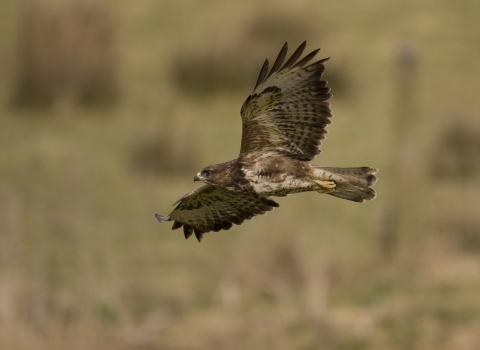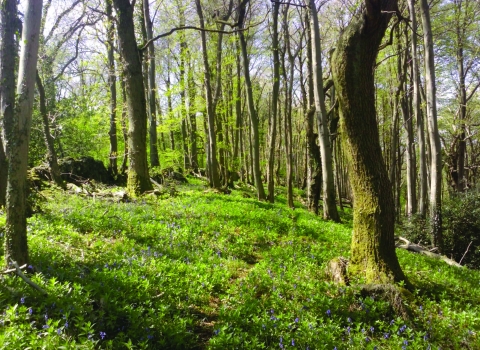Know before you go
Dogs
Visit the 'Dog walking on reserves' page of the Content section for more information.
When to visit
Opening times
Open at all timesBest time to visit
Spring and summerAbout the reserve
The steeper slopes, where soils are thin, contain species typical of limestone areas, such as Common Rock Rose, Salad Burnet and Wild Thyme. More unusual are species such as Dropwort and Horseshoe Vetch. To the north of the reserve are two hay meadows where you will find widespread Yellow Rattle, Common Knapweed and occasional Adders Tongue Fern.
Later in the year it is possible to see an abundance of the orchid Autumn Ladies Tresses, flowering across large areas of the reserve. Cooks Field is one of the few sites in Somerset where you can see the Chalkhill Blue butterfly, which is on the wing in late summer. Their caterpillars feed on the leaves of Horseshoe Vetch, which is found on the upper slopes of the reserve. Skylarks and Swallows are a common sight over the grasslands in summer and the occasional Peregrine Falcon can be spied high above the escarpment.
The reserve is an important feeding habitat for the local populations of Greater & Lesser Horseshoe Bats
.Reserve conservation management - The reserve is managed primarily by grazing with cattle and sheep during the spring and summer, which keeps the vegetation low to allow flowering plants to flourish. Livestock are excluded from the hay meadows until the hay is cut in late summer. Large areas of scrub are being cleared to restore the grassland, although some smaller patches will be retained to provide cover for insects and birds. Invasive species are also being controlled to prevent them from dominating the grassland.
History and archaeology - Cooks Fields reserve extends across the Mendip escarpment and onto the Mendip plateau above the village of Westbury sub Mendip. The reserve is rich in archaeological and geological features; the northern fields contain a fine example of a karstic basin which would have held a lake during the last ice age. The slopes of Cooks Fields still display strip lynchets which are associated with the medieval farm ruins at nearby Deer Leap.
Close to Rodney Stoke NNR, Ebbor Gorge NNR, Cheddar Gorge, Wookey Hole.
Extra information - Grasslands through the seasons
Grasslands look different throughout the year due to the way they are managed. At Cook’s Fields we use traditional techniques to manage different parts of the reserve as pasture and hay meadows. Pastures are grasslands that are grazed for most or all of the year. Different levels and types of stock are used to allow plants to flower over the summer and ensure land is not damaged in wet conditions during winter.
Meadows are grasslands where a hay cut is taken. Unlike pastures, grazing stock are removed in late spring, to allow flowers and grasses to grow tall, then flower and set seed before a hay cut is taken in mid-late summer, providing valuable winter fodder where needed. Aftermath grazing helps bed in the seeds and keep the grass low, aiding germination.
Species-rich grasslands such as these used to be a common sight in the landscape. This changed following Second World War, when a push for productivity combined with increasing agricultural mechanisation led to over 97% of species-rich meadows and pastures being lost. Somerset Wildlife Trust is helping to conserve the remaining grasslands such as this on our reserves, as well as restoring a diversity of flowers to grasslands throughout the landscape.


